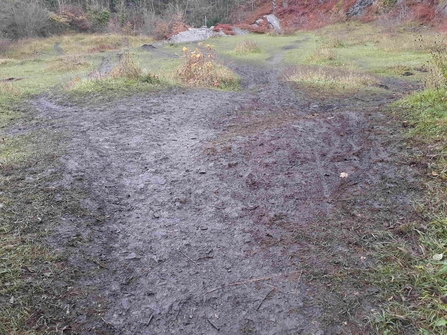Cross Hill Quarry is a haven for nature. Sitting next to Brungerly Park, just outside of Clitheroe, this local nature reserve is an amazing example of how nature can reclaim our industrial past. Once a bustling quarry providing stone for many of our local buildings, the area is now brimming with amazing wildlife and summer sees the old quarry floor carpeted with wildflowers including bee orchids and common spotted orchids.
However, this magnificent wildflower patch has suffered significant damage due to areas of the quarry floor being dug up to create mountain bike jumps, potentially threatening the future of this important habitat.


